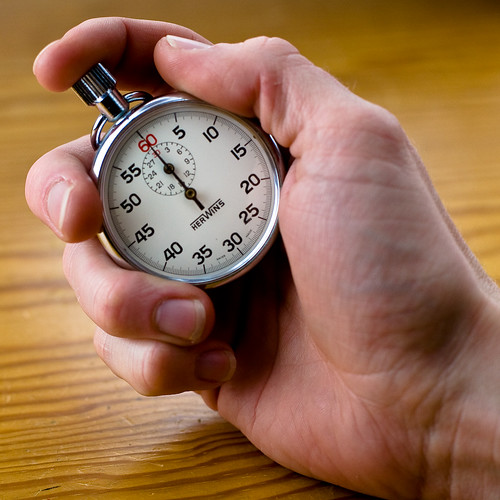
There’s been some discussion brewing among certain filmmakers about the impact of making movies that play faster than the current standard of 24 frames per second. Peter Jackson is shooting The Hobbit at 48fps, and others are reportedly experimenting with rates like 60 or even 120.
Mixed into the discussion are some really deep misconceptions about how vision and perception actually work. People are saying things like “the human eye perceives at 60fps”. This is simply not true. You can’t quantify the “frame rate” of the human eye, because perception doesn’t work that way. It’s not discrete, it’s continuous. There is, literally, no frame rate that is fast enough to match our experience of reality. All we can do, in frame-by-frame media, is to try to get closer.
The problem is that our eyes, unlike cameras, don’t stay put. They’re active, not passive. They move around in direct response to what they are seeing. If you watch an object moving past you, your eyes will rotate smoothly to match the speed of the thing you’re looking at. If what you’re looking at is real, you will perceive a sharp, clear image of that thing. But if it’s a movie made of a series of discrete frames, you will perceive a stuttering, ghosted mess. This is because, while your eyes move smoothly, each frame of what you’re watching is standing still, leaving a blurry streak across your retina as your eyes move past it, which is then replaced by another blurry streak in a slightly different spot, and so on. This vibrating effect is known as “strobing” or “judder”.
Applying camera-based effects like motion blur only makes the mess look worse. Now, your stuttering ghosted multiple image becomes a stuttering, ghosted blurry multiple image. (The emphasis on motion blur is particularly bad in VFX-heavy action movies, which is why I try to sit near the back.)

Filmmakers tend to work around this problem by using the camera itself as a surrogate for our wandering eye: tracking what’s important so that it effectively stays put (and therefore sharp) in screen space. But you can’t track everything at once, and a movie where nothing ever moves would be very dull indeed.
I am pretty sure there is no frame rate fast enough to completely solve this problem. However, the faster the frame rate, the less blurring and strobing you’ll experience as your eyes track moving objects across the screen. So I am extremely curious to see what Jackson’s Hobbit looks like at 48fps.
There’s a second problem here, which is cultural. My entire generation was raised on high quality feature films at 24 frames, and poorer-quality television (soap operas, local news) at 60 fields per second. As a result, we tend to associate the slower frame rate with quality. Commercial and TV directors caught on to this decades ago, and started shooting at 24fps to try to get the “film look”. How will we perceive a movie that’s shot at 48fps? Will it still feel “cheap” to us? And what about the next generation, raised on video games that play at much higher frame rates? What cultural baggage will they bring into the theater with them?
